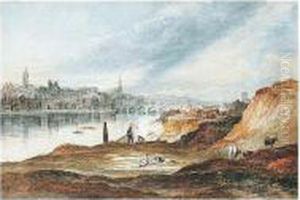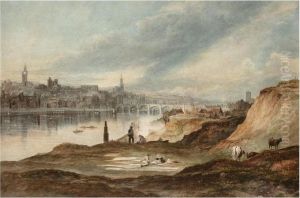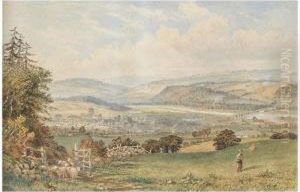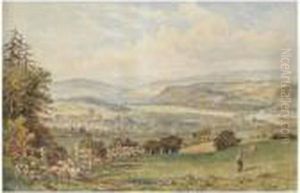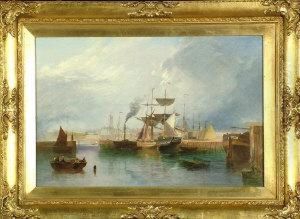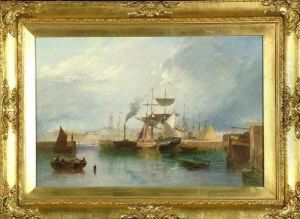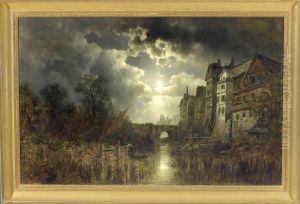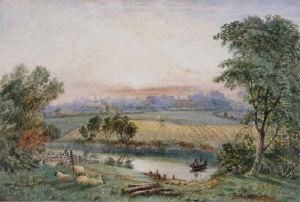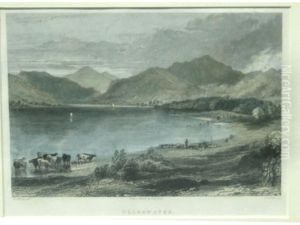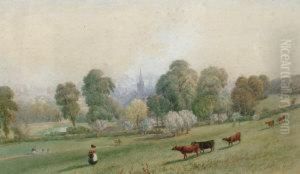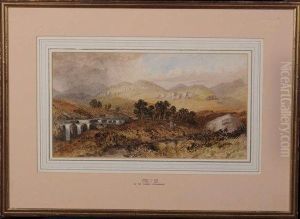Thomas Henry Hair Paintings
Thomas Henry Hair was an English painter and lithographer, known primarily for his detailed depictions of the industrial landscapes and architectures of Northern England during the 19th century. Born in Newcastle upon Tyne in 1810, Hair developed an early interest in the arts, which was nurtured through his education and early work experiences in his hometown.
His work provides a valuable historical record of the early stages of the Industrial Revolution, capturing the transformation of landscapes and cityscapes as industries and railroads began to dominate. Hair's lithographs and watercolors are particularly noted for their meticulous detail, accurately portraying the engineering triumphs and the burgeoning industries of the time.
Throughout his career, Hair traveled extensively across the North of England, documenting the changing scenery with a keen eye for detail and a profound appreciation for the industrial advancements of his era. His works were published in several volumes, with 'Views of the Collieries in the Counties of Northumberland and Durham' being among the most notable. This collection, published in the 1840s, is considered a seminal work for its comprehensive depiction of coal mining operations and its landscapes, providing insights into the working conditions and technologies of the period.
Hair's artistic contributions extend beyond the industrial scenes, including landscapes, urban scenes, and even some portraiture, but it is his industrial landscapes that have left a lasting legacy, offering a unique window into an era of profound change and development. Despite the industrial focus, his works often convey a sense of the sublime, reflecting the awe with which contemporaries viewed the technological advancements of the age.
Thomas Henry Hair died in 1875, but his works continue to be celebrated for their historical value and artistic merit. They serve not only as a testament to his skill as an artist but also as an important documentary record of the Industrial Revolution in Northern England. His detailed lithographs and paintings remain a valuable resource for historians and art enthusiasts alike, providing a vivid glimpse into the 19th-century industrial landscape.
